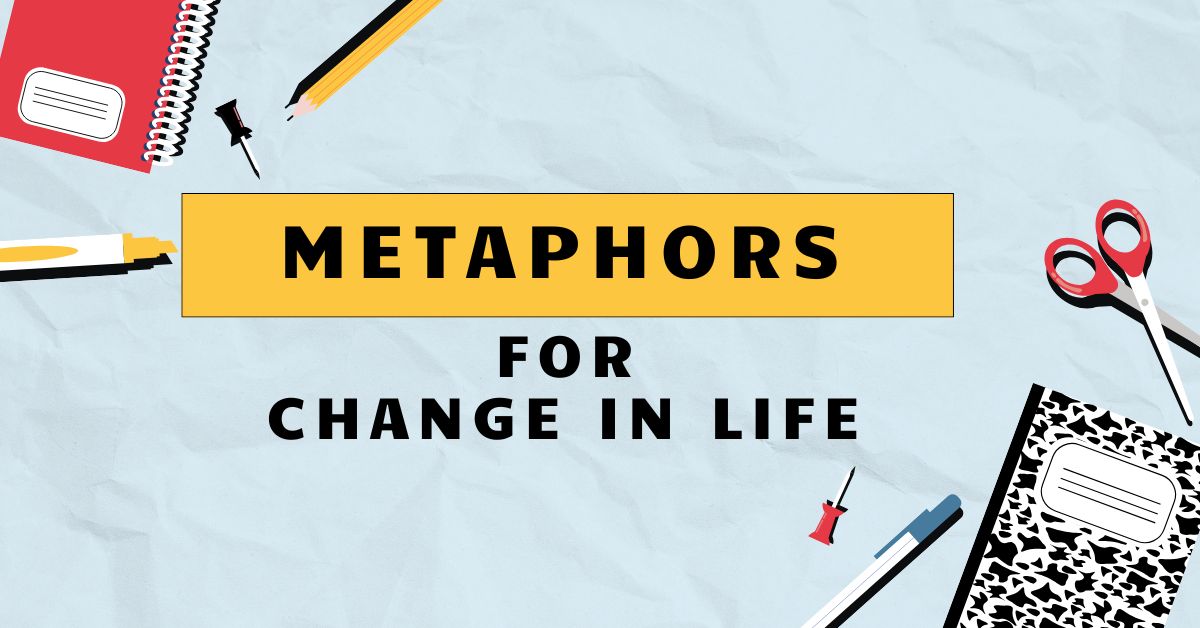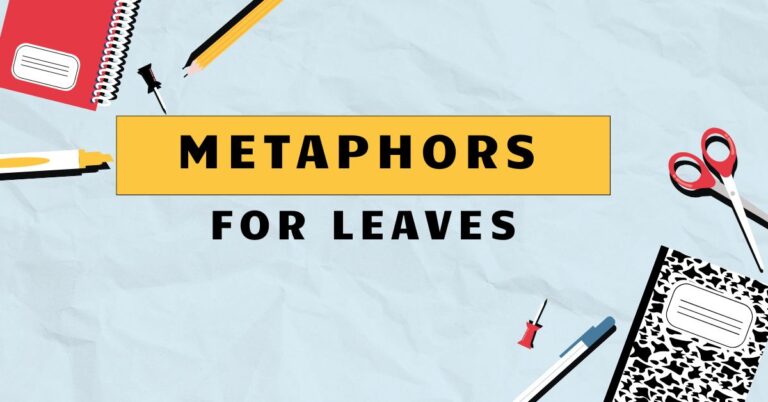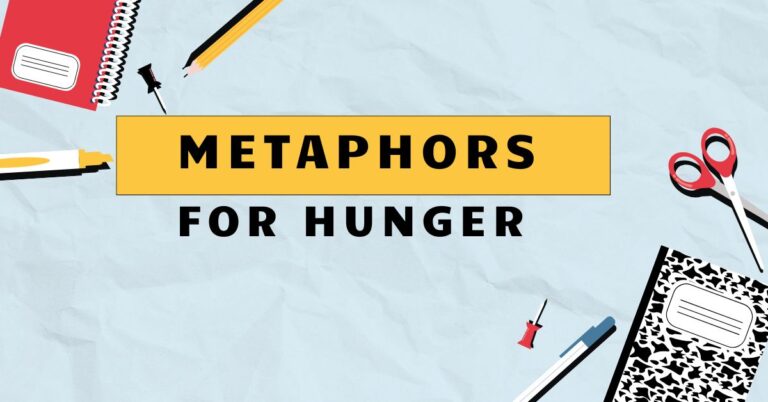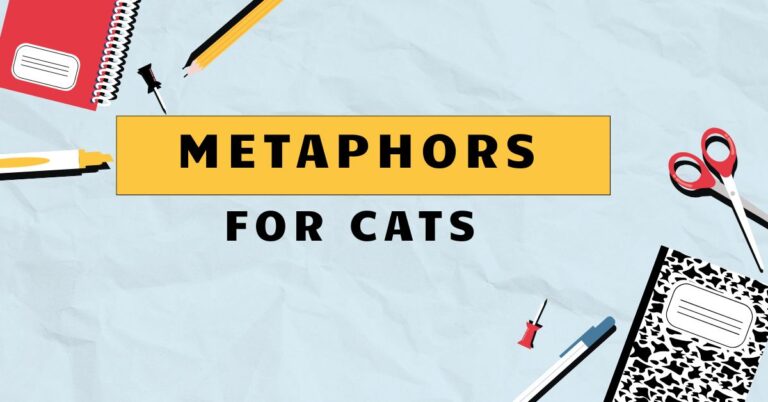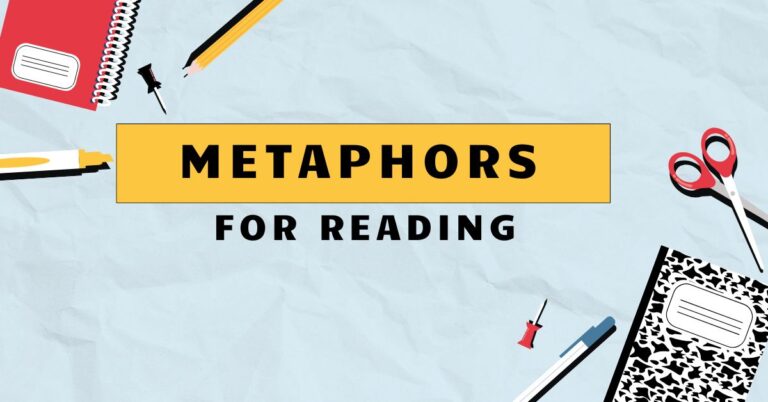37 Metaphors for Change in Life: A Grammatical Exploration
Metaphors are powerful literary devices that can profoundly influence how we perceive and articulate change. Understanding how metaphors function grammatically and rhetorically allows us to more effectively communicate the often complex and nuanced experience of personal transformation.
This article provides a comprehensive exploration of metaphors for change in life, focusing on their grammatical structures, types, and usage. It is designed for English language learners, writers, and anyone interested in deepening their understanding of metaphorical language and its impact.
Table of Contents
- Introduction
- Definition of Metaphor
- Structural Breakdown of Metaphors
- Types of Metaphors for Change
- Examples of Metaphors for Change
- Usage Rules for Metaphors
- Common Mistakes with Metaphors
- Practice Exercises
- Advanced Topics in Metaphorical Analysis
- Frequently Asked Questions
- Conclusion
Introduction
Metaphors are more than just decorative language; they are fundamental to how we understand the world, particularly abstract concepts like change. By comparing something unfamiliar (change) to something familiar (a journey, growth, or weather pattern), metaphors make the abstract concrete and understandable.
This article explores the grammatical structures and various types of metaphors used to describe change in life. It will provide a detailed analysis of how these metaphors function and offer practical guidance on their effective use, aimed at improving both comprehension and communication skills.
Definition of Metaphor
Ametaphoris a figure of speech that directly compares two unrelated things, asserting that one thing *is* another, without using “like” or “as” (which would make it a simile). The purpose of a metaphor is to create a vivid image or deeper understanding by transferring qualities from one thing to another.
Metaphors enrich language, making it more engaging and insightful.
In essence, a metaphor operates on the principle ofimplied comparison. It suggests a similarity between two seemingly different entities, inviting the reader or listener to recognize the connection and gain a new perspective.
The effectiveness of a metaphor lies in its ability to evoke emotion, create imagery, and simplify complex ideas.
Metaphors are classified as figures of speech, falling under the broader category of figurative language. Their primary function is to provide a non-literal means of expression, adding layers of meaning and depth to communication.
They are commonly found in literature, poetry, everyday speech, and even scientific discourse.
Structural Breakdown of Metaphors
A metaphor typically consists of two key elements: thetenorand thevehicle. The tenor is the subject being described, while the vehicle is the object or concept to which the tenor is being compared.
Understanding these components helps to analyze and deconstruct metaphors effectively.
For example, in the metaphor “Life is a rollercoaster,” “life” is the tenor (the subject), and “rollercoaster” is the vehicle (the object used for comparison). The metaphor suggests that life, like a rollercoaster, has ups and downs, thrills and scares.
Thegroundof a metaphor refers to the shared characteristics or similarities between the tenor and the vehicle. In the “life is a rollercoaster” example, the ground includes the elements of excitement, unpredictability, and alternating periods of highs and lows.
Identifying the ground is crucial for interpreting the meaning and relevance of the metaphor.
The effectiveness of a metaphor depends on the clarity and relevance of the connection between the tenor and the vehicle. A strong metaphor creates a vivid and meaningful association, while a weak metaphor may be confusing or ineffective.
Types of Metaphors for Change
Metaphors for change can be categorized based on the specific imagery and concepts they employ. Recognizing these categories can help in understanding and using metaphors more effectively to describe various aspects of change.
Transformative Metaphors
These metaphors describe change as a process of fundamental alteration or conversion. They often involve images of metamorphosis, alchemy, or significant shifts in form or state.
Transformative metaphors emphasize the profound and irreversible nature of change.
Examples include: “She emerged from the experience a butterfly,” or “The crisis was a crucible, forging him into a stronger leader.” These suggest a complete alteration of the subject’s character or state.
Journey Metaphors
Journey metaphors frame change as a voyage or path with a starting point, obstacles, and a destination. They highlight the process of moving from one state to another, emphasizing progress, challenges, and the passage of time.
These are some of the most common metaphors for life change.
Examples include: “Life is a winding road,” or “He embarked on a journey of self-discovery.” These emphasize the challenges and progression involved in personal development.
Growth Metaphors
Growth metaphors depict change as an organic process of development and maturation. They often use images of plants, seeds, and seasons to convey the idea of gradual and natural transformation.
These metaphors focus on the potential for improvement and expansion.
Examples include: “She blossomed into a confident speaker,” or “His ideas took root and flourished.” These metaphors highlight the positive and natural aspects of change.
Weather Metaphors
Weather metaphors use atmospheric conditions to represent different phases or aspects of change. They can describe periods of turmoil (storms), calm (sunshine), or renewal (spring).
These metaphors highlight the cyclical and often unpredictable nature of change.
Examples include: “The storm of emotions subsided,” or “A new dawn broke after the crisis.” These metaphors illustrate the emotional and temporal aspects of change.
Building Metaphors
Building metaphors portray change as a process of construction or reconstruction. They use images of foundations, structures, and architecture to emphasize the deliberate and systematic nature of transformation.
These metaphors often focus on planning, effort, and the creation of something new.
Examples include: “He rebuilt his life from the ground up,” or “She laid the foundation for a successful career.” These metaphors emphasize the active role of the individual in shaping their future.
Examples of Metaphors for Change
The following tables provide examples of different types of metaphors used to describe change in life, categorized by their primary image or concept. Each example is analyzed to highlight the tenor, vehicle, and ground of the metaphor.
Each table contains 25 examples.
Table 1: Transformative Metaphors
This table showcases metaphors that illustrate profound and fundamental change, often involving a complete shift in form or state.
| Metaphor | Tenor | Vehicle | Ground |
|---|---|---|---|
| He was a caterpillar, now a butterfly. | His personal growth | Butterfly metamorphosis | Complete transformation |
| The old company was a phoenix rising from the ashes. | Company’s revival | Phoenix rebirth | Renewed existence after destruction |
| She shed her old skin. | Her past identity | Shedding skin | Releasing old habits |
| He emerged from the war a changed man. | His personality | Changed man | Significant alteration due to experience |
| The experience was a crucible, forging her into a leader. | Her leadership skills | Crucible | Intense refinement process |
| She transformed from a wallflower to a confident speaker. | Her speaking ability | Transformation | Complete change in capability |
| He turned over a new leaf. | His behavior | New leaf | Starting fresh with good intentions |
| She broke free from her shell. | Her shyness | Breaking free | Overcoming limitations |
| He underwent a metamorphosis. | His character | Metamorphosis | Profound change |
| She reinvented herself after the divorce. | Her identity | Reinvention | Creating a new persona |
| His heart became a stone. | His emotions | Stone | Loss of feeling |
| She blossomed into a confident young woman. | Her personality | Blossoming | Developing and maturing |
| He shed his inhibitions. | His constraints | Shedding | Releasing restrictions |
| The caterpillar became a butterfly. | His transformation | Butterfly | Complete metamorphosis |
| The old house was reborn after the renovation. | The house | Rebirth | Complete renewal |
| The software evolved over time. | The software | Evolution | Gradual development |
| The ugly duckling became a swan. | Her transformation | Swan | Beautiful metamorphosis |
| He traded his old habits for new ones. | His behavior | Trading | Exchanging one thing for another |
| The chrysalis opened to reveal a butterfly. | His transformation | Butterfly | Complete metamorphosis |
| She traded her fears for courage. | Her emotions | Trading | Exchanging one thing for another |
| He transformed his body through exercise. | His physique | Transformation | Complete change in appearance |
| She transcended her limitations. | Her abilities | Transcendence | Rising above restrictions |
| His spirit was forged in the fires of adversity. | His character | Forging | Strengthening through hardship |
| She was a diamond in the rough. | Her potential | Diamond | Hidden beauty |
| He was a lump of clay, molded into a masterpiece. | His potential | Masterpiece | Shaped into something beautiful |
Table 2: Journey Metaphors
This table provides examples of metaphors that frame change as a journey, emphasizing progress, challenges, and the passage of time.
| Metaphor | Tenor | Vehicle | Ground |
|---|---|---|---|
| Life is a winding road. | Life | Winding road | Unpredictable path with twists and turns |
| He embarked on a journey of self-discovery. | Self-improvement | Journey | Process of exploration and growth |
| She navigated the challenges of her career. | Career progress | Navigation | Guidance through difficulties |
| He reached a crossroads in his life. | Life decision | Crossroads | Critical point requiring a choice |
| The project was a long and arduous trek. | Project completion | Trek | Difficult and lengthy journey |
| She climbed the ladder of success. | Career advancement | Ladder | Step-by-step progress |
| He was lost in the wilderness of his grief. | Grief | Wilderness | State of confusion and despair |
| Life is a marathon, not a sprint. | Life | Marathon | Endurance and long-term effort |
| She charted a new course for her life. | Life direction | Chart | Planning and guidance |
| He sailed through his exams. | Exam success | Sailing | Smooth and easy progress |
| She stumbled upon a new opportunity. | New opportunity | Stumbling | Accidental discovery |
| He backtracked on his decision. | Decision reversal | Backtracking | Returning to a previous state |
| Life is a rollercoaster. | Life | Rollercoaster | Ups and downs, excitement and fear |
| She took the scenic route to success. | Success | Scenic route | Enjoyable and indirect path |
| He paved the way for future generations. | Legacy | Paving | Creating a foundation for others |
| She was on the right track. | Progress | Track | Correct direction |
| He hit a roadblock in his career. | Career obstacle | Roadblock | Obstacle preventing progress |
| She crossed the finish line. | Achievement | Finish line | Completion of a goal |
| He was at a turning point in his life. | Life decision | Turning point | Critical moment requiring a change |
| She explored new avenues in her career. | Career options | Avenues | New possibilities |
| He lost his way. | Direction | Lost | Lack of direction |
| She found her footing. | Stability | Footing | Gaining stability |
| He was on a slippery slope. | Decline | Slippery slope | Gradual decline |
| She jumped the hurdles of life. | Life obstacles | Hurdles | Overcoming obstacles |
| He reached the summit of his career. | Career peak | Summit | Highest point |
Table 3: Growth Metaphors
This table illustrates metaphors that depict change as an organic process of development and maturation, often using images of plants and seasons.
| Metaphor | Tenor | Vehicle | Ground |
|---|---|---|---|
| She blossomed into a confident speaker. | Her confidence | Blossoming | Developing and flourishing |
| His ideas took root and flourished. | His ideas | Rooting and flourishing | Growing and thriving |
| The project bore fruit. | Project success | Bearing fruit | Yielding positive results |
| He was a late bloomer. | His development | Late bloomer | Developing later than others |
| She nurtured her talent. | Her talent | Nurturing | Fostering growth and development |
| The seed of an idea was planted. | New idea | Seed | Beginning of growth |
| He reaped the rewards of his hard work. | Hard work benefits | Reaping | Harvesting positive outcomes |
| She pruned her priorities. | Her priorities | Pruning | Removing unnecessary elements |
| He cultivated his skills. | His skills | Cultivating | Developing and refining |
| She weathered the storm. | Adversity | Weathering | Enduring difficult times |
| He harvested his success. | Success | Harvesting | Gathering the rewards of effort |
| She sowed the seeds of change. | Change initiation | Sowing | Starting the process of transformation |
| His career was in full bloom. | Career success | Full bloom | Peak of development |
| She was a budding artist. | Her artistic talent | Budding | Beginning to develop |
| He let his ideas germinate. | His ideas | Germinating | Developing and growing |
| She branched out into new areas. | New opportunities | Branching out | Expanding into new fields |
| He uprooted his life. | Life change | Uprooting | Making a significant change |
| She dug deep to find her strength. | Inner strength | Digging deep | Searching for hidden resources |
| He was a diamond in the rough. | Hidden potential | Diamond | Unrefined potential |
| She added layers to her understanding. | Understanding | Layers | Increasing depth |
| He was a sponge, absorbing knowledge. | Learning ability | Sponge | Easily absorbing information |
| She shed her old habits. | Old habits | Shedding | Releasing old patterns |
| He found fertile ground for his ideas. | Conducive environment | Fertile ground | Supportive environment |
| She nurtured a new relationship. | Relationship | Nurturing | Fostering growth |
| He reaped what he sowed. | Consequences | Reaping | Experiencing results of actions |
Table 4: Weather Metaphors
This table provides examples of metaphors that use atmospheric conditions to represent different phases or aspects of change, highlighting the cyclical and often unpredictable nature of change.
| Metaphor | Tenor | Vehicle | Ground |
|---|---|---|---|
| The storm of emotions subsided. | Emotions | Storm | Intense and turbulent feelings |
| A new dawn broke after the crisis. | Post-crisis period | New dawn | Beginning of a new phase |
| She weathered the storm. | Difficult period | Weathering | Enduring hardship |
| He was in the eye of the storm. | Crisis center | Eye of the storm | Calm amidst chaos |
| The clouds of doubt began to clear. | Doubt | Clouds | Uncertainty and confusion |
| She was a ray of sunshine. | Positive influence | Sunshine | Brightness and happiness |
| He was under a cloud. | Disgrace | Cloud | State of negativity |
| She felt a chill in the air. | Anticipation of trouble | Chill | Unpleasant feeling |
| The fog lifted. | Confusion | Fog | Clearing of uncertainty |
| He was caught in a whirlwind of activity. | Busy period | Whirlwind | Rapid and chaotic activity |
| She was riding high on a wave of success. | Success | Wave | Momentum and achievement |
| He was adrift at sea. | Lack of direction | Adrift | Feeling lost and without purpose |
| She was drowning in sorrow. | Sorrow | Drowning | Overwhelmed by sadness |
| He was skating on thin ice. | Risky situation | Thin ice | Precarious position |
| She was walking on sunshine. | Happiness | Sunshine | Feeling joyful and optimistic |
| He was a beacon of hope. | Hope | Beacon | Source of guidance and inspiration |
| She was a breath of fresh air. | Positive change | Fresh air | New and refreshing influence |
| He was a dark cloud on the horizon. | Impending trouble | Dark cloud | Sign of future problems |
| She was a rainbow after the rain. | Hope after hardship | Rainbow | Promise of better times |
| He was a calm sea. | Tranquility | Calm sea | Peaceful and serene |
| She was a rising tide. | Increasing influence | Rising tide | Growing power |
| He was a thunderstorm. | Intense outburst | Thunderstorm | Sudden and powerful event |
| She was a gentle breeze. | Kind influence | Gentle breeze | Soft and pleasant presence |
| He was a snowstorm of problems. | Overwhelming issues | Snowstorm | Numerous and difficult problems |
| She was a heat wave of passion. | Intense passion | Heat wave | Strong and fiery emotion |
Table 5: Building Metaphors
This table provides examples of metaphors that portray change as a process of construction or reconstruction, emphasizing the deliberate and systematic nature of transformation.
| Metaphor | Tenor | Vehicle | Ground |
|---|---|---|---|
| He rebuilt his life from the ground up. | Life reconstruction | Rebuilding | Starting over after a setback |
| She laid the foundation for a successful career. | Career preparation | Foundation | Creating a solid base |
| He constructed a new identity. | Identity creation | Construction | Building a new persona |
| She built bridges between cultures. | Cultural understanding | Building bridges | Connecting different groups |
| He fortified his defenses. | Protection | Fortification | Strengthening defenses |
| She erected barriers to protect herself. | Self-protection | Erecting barriers | Creating boundaries |
| He renovated his approach to life. | Life approach | Renovation | Updating and improving |
| She remodeled her thinking. | Thinking process | Remodeling | Changing and improving |
| He established a new business. | Business creation | Establishment | Starting a new venture |
| She demolished her old beliefs. | Old beliefs | Demolition | Destroying old ideas |
| He reinforced his knowledge. | Knowledge enhancement | Reinforcement | Strengthening understanding |
| She cemented her relationships. | Relationship building | Cementing | Strengthening connections |
| He laid the groundwork for success. | Success preparation | Groundwork | Creating a necessary base |
| She framed her perspective. | Perspective shaping | Framing | Defining viewpoint |
| He pieced together a new strategy. | Strategy creation | Piecing together | Assembling a plan |
| She erected a wall of silence. | Emotional distance | Wall | Creating separation |
| He built a strong reputation. | Reputation building | Building | Creating a positive image |
| She constructed her career. | Career building | Construction | Creating a successful career path |
| He fortified his resolve. | Determination | Fortifying | Strengthening resolve |
| She laid the cornerstone of her project. | Project beginnings | Cornerstone | Essential foundation |
| He architected a new plan. | Plan creation | Architecting | Designing a strategy |
| She designed her future. | Future planning | Designing | Creating a future vision |
| He paved the road to success. | Success path | Paving | Preparing the way |
| She built a career on trust. | Career foundation | Building | Creating a base on trust |
| He constructed a new life. | Life creation | Construction | Building a new lifestyle |
Usage Rules for Metaphors
Using metaphors effectively requires careful consideration of several rules. First, ensure thetenorandvehiclehave a clear and relevant connection.
The comparison should be meaningful and not too abstract or obscure.
Second, avoidmixed metaphors, which combine incongruous images or ideas, leading to confusion. For example, “He was burning the midnight oil to climb the ladder of success” mixes the images of burning oil with climbing a ladder, creating a nonsensical picture.
Instead, use a single, consistent metaphor.
Third, be mindful ofoverused metaphors(clichés). While they are easily understood, they lack originality and impact.
Strive for fresh and inventive metaphors that capture the reader’s attention. For example, instead of saying “Life is a journey,” try “Life is an unwritten book, each day a new page waiting to be filled.”
Fourth, ensure the metaphor is appropriate for thecontextand audience. Consider the tone and purpose of your communication.
A metaphor that is effective in a poem may not be suitable for a scientific report.
Fifth, maintain consistency throughout the passage. Avoid shifting metaphors abruptly, as this can disrupt the flow and confuse the reader.
If you start with a journey metaphor, continue with related imagery.
Common Mistakes with Metaphors
One common mistake is using mixed metaphors, where two or more incompatible metaphors are combined. Incorrect: “He grabbed the bull by the horns and nipped it in the bud.” Correct: “He grabbed the bull by the horns.” or “He nipped it in the bud.”
Another frequent error is using clichéd metaphors, which lack originality and impact. Incorrect: “Life is a journey.” Correct: “Life is an intricate dance, full of unexpected steps and partners.”
Using metaphors that are too abstract or unclear can also hinder understanding. Incorrect: “Change is a fractal.” Correct: “Change is a series of interconnected cycles, each building upon the last.”
Failing to maintain consistency within a metaphor is another pitfall. Incorrect: “She embarked on a journey and then hit a brick wall.” Correct: “She embarked on a challenging journey filled with unexpected obstacles.”
Finally, using metaphors that are inappropriate for the context or audience can be ineffective or even offensive. Always consider the intended audience and the purpose of your communication.
Practice Exercises
These exercises will help you practice identifying, analyzing, and using metaphors for change in life. Each exercise contains 10 questions.
Answers are provided below.
Exercise 1: Identifying Metaphors
Identify the metaphors in the following sentences.
| Question | Answer |
|---|---|
| 1. Her career was a rocket ship to success. | Rocket ship |
| 2. He was drowning in a sea of debt. | Drowning in a sea |
| 3. The news hit him like a ton of bricks. | Ton of bricks |
| 4. She was a beacon of hope in the darkness. | Beacon of hope |
| 5. Life is a blank canvas. | Blank canvas |
| 6. He was a diamond in the rough. | Diamond in the rough |
| 7. The project was a marathon, not a sprint. | Marathon, not a sprint |
| 8. She was skating on thin ice. | Skating on thin ice |
| 9. His words were a double-edged sword. | Double-edged sword |
| 10. The city was a concrete jungle. | Concrete jungle |
Exercise 2: Analyzing Metaphors
Identify the tenor and vehicle in the following metaphors.
| Question | Tenor | Vehicle |
|---|---|---|
| 1. Life is a rollercoaster. | Life | Rollercoaster |
| 2. Time is a thief. | Time | Thief |
| 3. He is a shining star. | He | Shining star |
| 4. She is a night owl. | She | Night owl |
| 5. The world is a stage. | The world | Stage |
| 6. He is a pillar of strength. | He | Pillar of strength |
| 7. She is a ray of sunshine. | She | Ray of sunshine |
| 8. The internet is an information superhighway. | The internet | Information superhighway |
| 9. He is a lone wolf. | He | Lone wolf |
| 10. She is a walking encyclopedia. | She | Walking encyclopedia |
Exercise 3: Using Metaphors
>
Complete the following sentences by adding an appropriate metaphor for change.
| Question | Answer |
|---|---|
| 1. After the crisis, she emerged _________. | A phoenix from the ashes |
| 2. His career _________, reaching new heights. | Took off like a rocket |
| 3. She _________ after years of hard work. | Reaped the rewards |
| 4. His life _________ when he changed careers. | Took a new direction |
| 5. The project _________, yielding great results. | Bore fruit |
| 6. He _________ to overcome his challenges. | Weathered the storm |
| 7. Her confidence _________ as she gained experience. | Blossomed |
| 8. His determination _________ as he faced adversity. | Was forged in fire |
| 9. She _________ after the difficult experience. | Turned over a new leaf |
| 10. His ideas _________, transforming the company. | Took root and flourished |
Advanced Topics in Metaphorical Analysis
Extended Metaphors: These metaphors are sustained throughout a longer passage or entire work, developing complex and layered meanings. Analyzing extended metaphors involves tracing their evolution and impact on the overall theme.
Dead Metaphors: These are metaphors that have become so common that they are no longer recognized as figurative language. Examples include “head of the table” or “legs of a chair.” Understanding how metaphors become “dead” provides insight into language evolution.
Cognitive Metaphors: This concept explores how metaphors shape our thinking and understanding of abstract concepts. Analyzing cognitive metaphors reveals the underlying conceptual structures that influence our perceptions.
Metaphorical Reasoning: This involves using metaphors to solve problems or make decisions. Understanding metaphorical reasoning can enhance creativity and innovation in various fields.
Frequently Asked Questions
Conclusion
Metaphors are indispensable tools for understanding and articulating the complexities of change in life. By grasping their grammatical structures, exploring different types, and adhering to usage rules, you can enhance your communication skills and deepen your appreciation for the power of figurative language.
Whether you are an English language learner, a writer, or simply someone interested in the nuances of language, mastering metaphors will enrich your ability to convey and comprehend the profound transformations that shape our lives.

